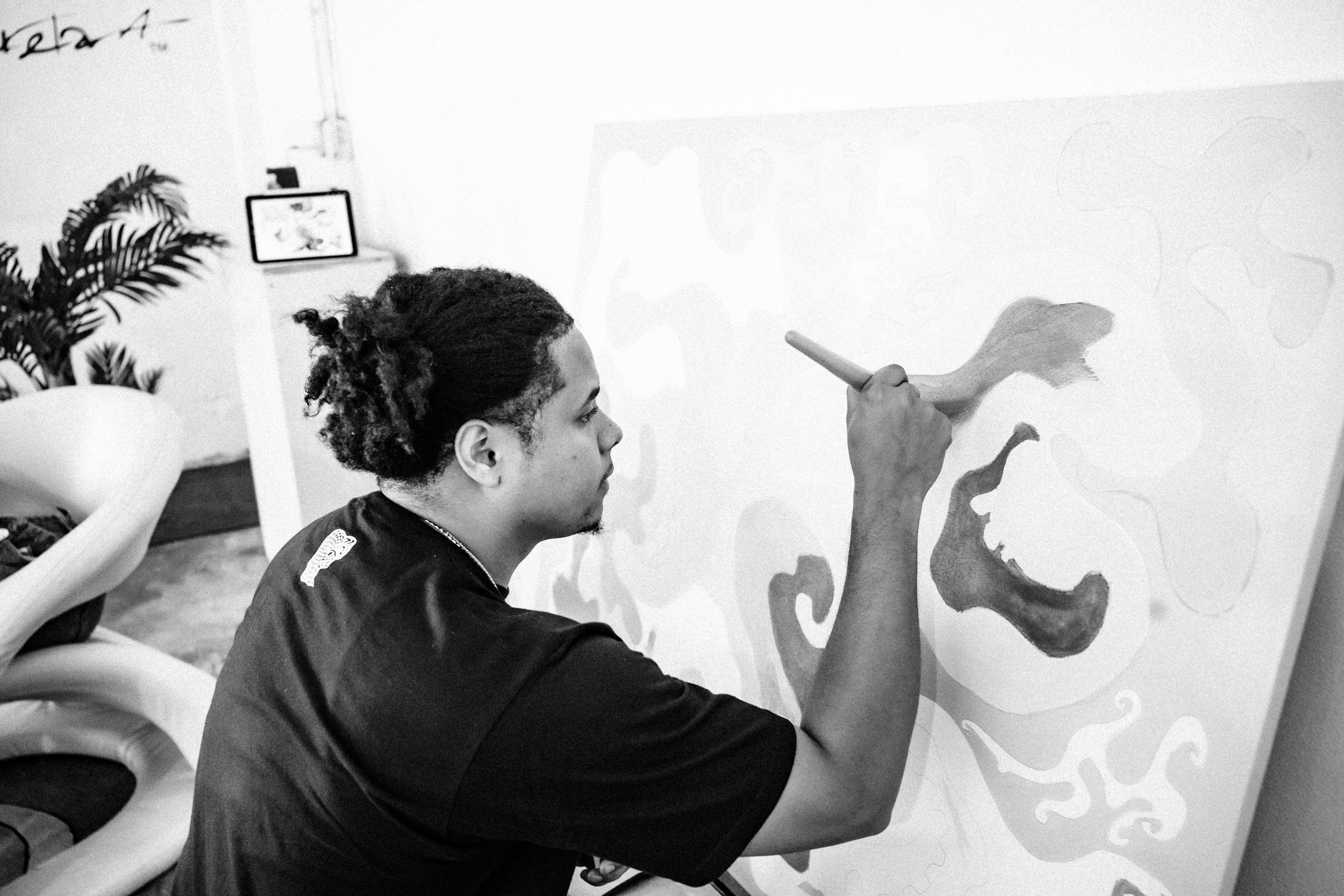This case study showcases end-to-end product development, designed to solve a real-world problem. From concept to high-fidelity functional prototype in 4 weeks.
Project was developed in collaboration with Misia Ochrymiuk: illustrations, motion design & support.
(for the best experience, view on desktop)
art swap: product development
Problem statement and proposed solution
01_Concept
PROBLEM:
Artists struggle to find jobs/creative collaborations on established platforms, as they are overcrowded, intimidating, time-consuming, focused on public metrics
SOLUTION:
Art/swap addresses these issues by offering a streamlined, user-friendly platform where artists can quickly create profiles and connect with others in just a few clicks

Research results, User story, User Persona, IA & User flow
02_Research phase
I conducted market and user research,
surveying & interviewing
40 visual artists aged 18-44 in Berlin
Three key personas emerged from the research. These insights shaped art/swap to meet both professional & personal needs while addressing artists' specific frustrations and motivations.
To address the identified user needs I developed product key features
03_User flow & iA
-
Artists can showcase their skills, tools, and portfolios by linking existing art profiles or uploading their work to a personal gallery
-
- Job Mode offers a job board for applying or posting opportunities, with a Feedback Mode for project critiques
- Friends Mode includes an Art Events feature and a Tinder-like Swipe Mode for matching with fellow artists -
A Change Mode option lets users switch between Job and Friends modes, and the DM system includes voice call features for real-time connections
Based on this informations,
I created user flow and information architecture.
Style-guide, Design Principles, Wireframes, Component Library
04_Visual fundaments
Art Swap’s dark-themed UI with vibrant pink, orange, green, and purple accents creates a bold yet intuitive experience.
Designed for creativity and collaboration, the interface is sleek, minimal, and easy to navigate.
A component library and structured wireframes ensure consistency, accessibility, and seamless artistic exchanges.
05_Prototyping and testing
Initial Prototype, Testing, Iterations, Final prototype
Following the design phase, I developed an interactive prototype. To ensure it’s usability and effectiveness, I conducted
onsite usability tests with six users.
This feedback-driven approach allowed me to identify areas for improvement and implement changes.




















